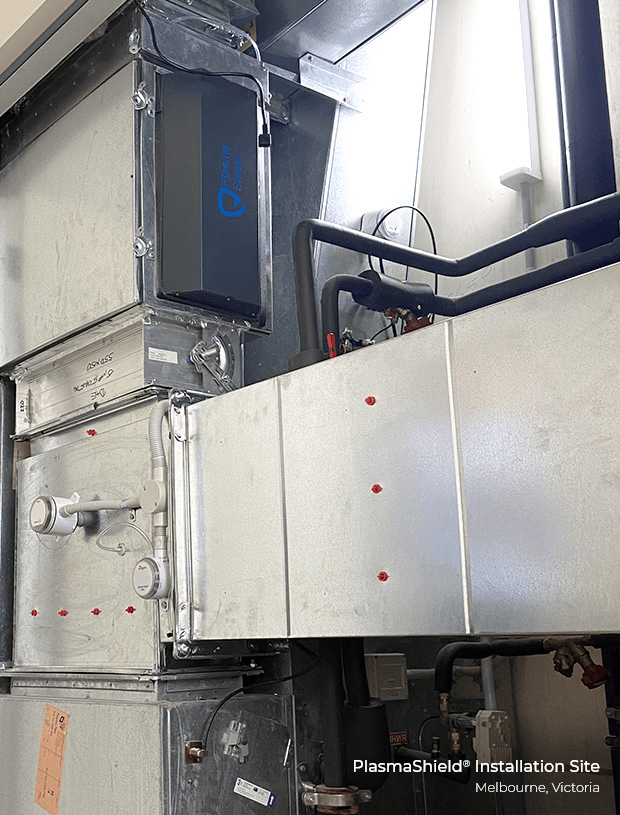Consulting Engineers
Home > Consulting Engineers
“Integrated HVAC solution”.
Our bio-HEPA™ technology fills the gap between mechanical filtration and air purification methods, with distinct ability to electrolyse aerosolised water droplets. It removes odours, destroys viable particles, and exceeds traditional HEPA levels of filtration with significantly lower pressure drop.
The rated system performance is up to 99.99998% in single-pass removal efficiency for harmful microorganisms including viruses, up to 98% of VOCs, and HEPA equivalent for particles that are equal to or larger than 0.3 µm. This performance is achieved while maintaining pressure drop of approximately 120 Pascals for each system.
This enables consulting engineers to achieve Australian NCC compliant indoor air quality with reduced outside air requirements by up to 75% using AS1668.2-2012 Appendix D and ASHRAE’s equivalent performance-based procedure for Ventilation and Indoor Air Quality.
Since the recent release of ASHRAE’s new standard 241P “Control of Infectious Aerosols”, the process of air decontamination and removal / inactivation of pathogens in return air is now recognised and expressed as “equivalent outdoor air” via the published calculation method. PlasmaShield can comply with these requirements via published pathogen inactivation results and can also assist with calculations to demonstrate performance under ASHRAE241P.

Integration of our bio-HEPA technology allows consulting engineering to:
- Deliver enhanced indoor air quality for your clients with improved performance compared to HEPA and UV alternatives.
- Apply as an odour filtration device to achieve compliant (deemed to satisfy) or enhanced indoor air quality with lower outside air flowrates.
- Reduce air conditioning system peak load, power supply infrastructure capacity, capital cost and energy consumption.
- Reduce ongoing operational and maintenance costs.

Controlled Case Study
Energy Savings Potential
One of the potential benefits of using the PlasmaShield in mechanically ventilated buildings is that the relevant Australian Standards governing the design of ventilation systems, AS 1668.2 – 2012, allows for provisions to reduce the requirements to bring in fresh (“outside”) air into the building if sufficient air filtration is provided. This reduction in outside air requirements reduces the peak load and ongoing energy consumption of the HVAC system by potentially reducing the outside air flow rates and the need for conditioning the outside air.
- Annual gas energy saving of 791MJ (when natural gas is used for heating)
- Annual electrical energy saving of 54MWh (when electricity is used for heating and cooling)
- Annual CO2 emissions reduction of 53 tons
- Peak thermal load saving – heating: 25%
- Peak thermal load saving – cooling: 13%
See our “Published Data” for details or “Contact Us” for access to accredited HVAC design and technology integration tools.